Last weekend I flip to Paris
I am restless and hungry, needing something French, a croissant at 6 am at a cafe with tables on the busy pavement, homemade onion soup at midday, and the very best falafel from the Rue du Rosiers in the Jewish quarter.
The beauty of living in London, even in this post-Brexit era, is the fact we can skip over the sea on a boat/train, under the sea by the Channel Tunnel, or via the sky by plane. (A Flixbus is about 50 euros return Paris-London, and Eurostar can be as cheap as 39 pounds one way).
I have 48 hours to fill my hunger in.
My friend Andrei wants to go to the Louvre. I cannot think of anything more dreadful on a Saturday morning. Here is his picture taken at 11 am!
Instead, I meet Nathalie, my cousin, a Parisian photographer/ videographer - her website is given at the bottom of this post.
As we meander left from the Gare du Nord in the 18eme, in the distance the Butte-Montmarte - Montmarte’s Hillock (the literal translation), the highest point in Paris - where sits the Sacré Cœur basilica overlooking, like a tender mother her children, which are the sprawling streets below her.
The 18th arrondissement is also the African district,
Goutte d'Or, where the streets are lined with shops selling predominantly African ware such as yams, multicoloured spices, hair pieces, wedding garments, charms, potions, and divine couscous dishes in many variations from Algeria to Libya. Saturday people are also busy with baskets, bags and eagerness as they bustle to the marché Barbès, between the metro station Barbès et La Chapelle.
Cities are smells, connections, sounds, silences, strangers, a glance, an exchange, and a smile. This Saturday the sun suddenly pops out from its February moodiness, and a ribbon of pinky-yellow blesses the skies. The small Librairie Catholique, next to a pharmacie selling antique violette and lemon soap from Italy which take centre place in the small front window which has not been dusted, it seems, since the soap was carefully placed there, opens wide its doors.
We walk in.
Adorned with devotional candles, statues, pictures, charms, anointed oils, hand written incantations and incense from every corner of the Christian world, one simply cannot walk out empty-handed. I buy a book on Saint Veronique, my second name-sake, who is the saint of photography. She is also saint to the launderer, those who wash linen, not launder money. Unknown to her, she created the first image of Jesus Christ; at the Sixth Station of the Cross she wiped Jesus’ face with her handkerchief, which He handed back to her with His image impregnated upon it. It is preserved, we are told, in Saint Peter's Basilica in Rome, one of the most prized relics of Christianity.

Further along the street is the Louxor Cinema,
majestic and strutting the corner of 170 boulevard Magenta/boulevard de la Chapelle. Built in 1920 by the architect Henry Zipcy in the Egyptian Revival style for the locals to give them something glorious, wonderful and exotic to lift them away from the humdrum of everyday life. There are three screenings a day - today: Tchaikovsky's Wife, The Fabelmans, and Sons of Ramses. The building was saved in 2013 by an association after years of neglect and decay. She sticks out, une grande dame in oriental splendor. Here is a French program from 1924 to give you a feeling of those exciting times.
The artists of her heyday, Pablo Picasso, Georges Braque, Amedeo Modigliani, Pierre- Auguste Renoir, and Suzanne Valadon, the muse-artiste of many, would have drunk long into the night here on the rooftop bar, then wandered back up the hill to Montmartre, still set apart from Paris on her throne, and dotted with about thirty windmills, which also doubled up as brothels. Today the famous Moulin Rouge cabaret which gave birth to the Can-Can is one of three windmills that are left standing.
It takes about 10 minutes to get to la Rue Foyatier
and her 222 steps which lead up the hill to the Basilica. There is a garden path which weaves around the hill, but today it is closed. Few tourists, mainly locals, walk upwards, not stopping, used to the climb. The hill is also called “mountain of the martyr”, for Saint Denis, the patron saint of France, says Nathalie. He was beheaded on this mount around 250 AD.
We do not stop to go into the church, we have visited it together before. Today is not about the big stops on the map, but the smaller less known.
We will visit the intimate Musée de Montmartre at 12, rue Cortot which was Suzanne Valadon’s studio for many years. Suzanne was the inspiration/muse to many artists, model, lover of Montmarte and accomplished artist herself. The Musée lies behind La Place du Tertre, the famous square dotted with cafes and wandering street artists.
It has been a village square since the 12th-century when it stood in the heart of a Benedictine Montmartre Abbey, which was demolished during the French Revolution. All that remains is the vineyard which falls around the Musée, whose gardens tilt and cling like vineyards in the craggy pays Cathar, Southern France.
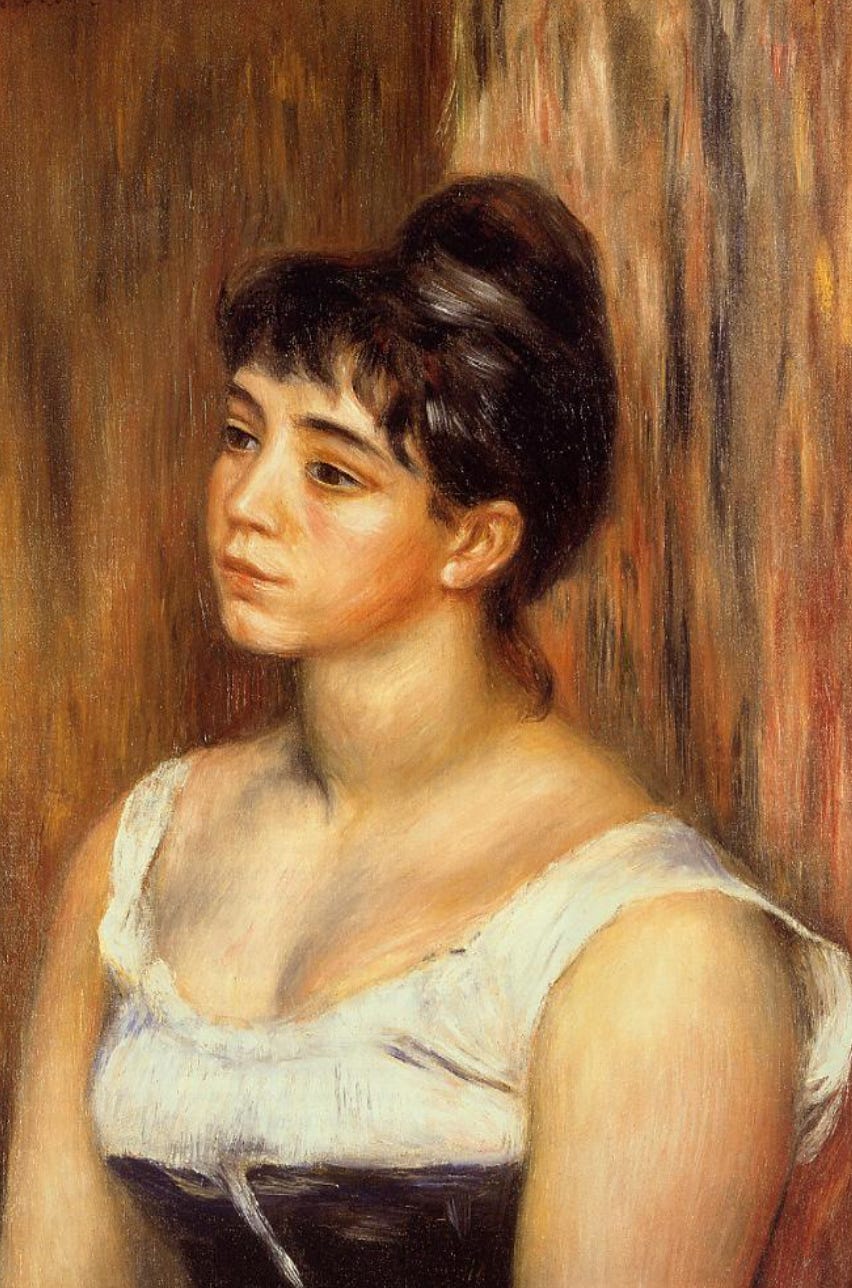
For a moment I think of Andrei making his way through the hoards in the vastness of Le Louvre; here we are in a small wooden-floored creaking house where 6,000 archives are kept: preserved photos of the Moulin Rouge dance girls in its primetime, the Chat noir, the first avant-garde cabaret to open its doors, Toulouse-Lautrec in fancy dress, goofy-eyed, who lived for years in the area, and paintings, etchings, musings, poems, love letters. This is how museums could be. Big enough to tell the story, small enough to feel part of that story. Lives lived, lively, bouncing from the walls happily, sweetly, naughtily; so tenderly curated.
Suzanne’s studio overlooks the garden, mostly unchanged, with the very swing that Renoir painted still hanging in the tree.
We sit in the chilly garden air drinking coffee. Nothing has changed really, the charm is alive, the studio Suzanne worked in as she left it, the rooms smelling slightly of beeswax and carefully kept with paint brushes and easel as she had them, next to her son’s, the artist Maurice Utrillo. It is still her home, she has opened the door for us to come in. Her place, where her family lived and her artists painted, lovers kissed, cried, left each other, drunk and made merry once again.
Her place. Time capturing the whispers on the wind. And quietness. The few people here respecting the calm, not wanting to intrude too much into this family life.
A gardener is clearing away winter’s overcoat. Nathalie chatters to me about grains and soil and our next stop, the Canal Sainte-Martin, to visit some community gardens.
For now, nothing is more satisfying. My hunger is gone. And I know,
I don’t want the Louvre, I want this!
My 3 minute tribute to Musée de Montmarte & Paris streets in 3 minutes
Thank you so much. I hope you enjoyed this preamble in the 18eme as much as we did.
Have a great week.
Here is Nathalie’s website. Check out her innovative Paris photos VivaCite.

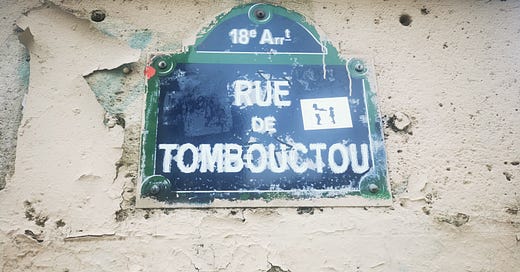




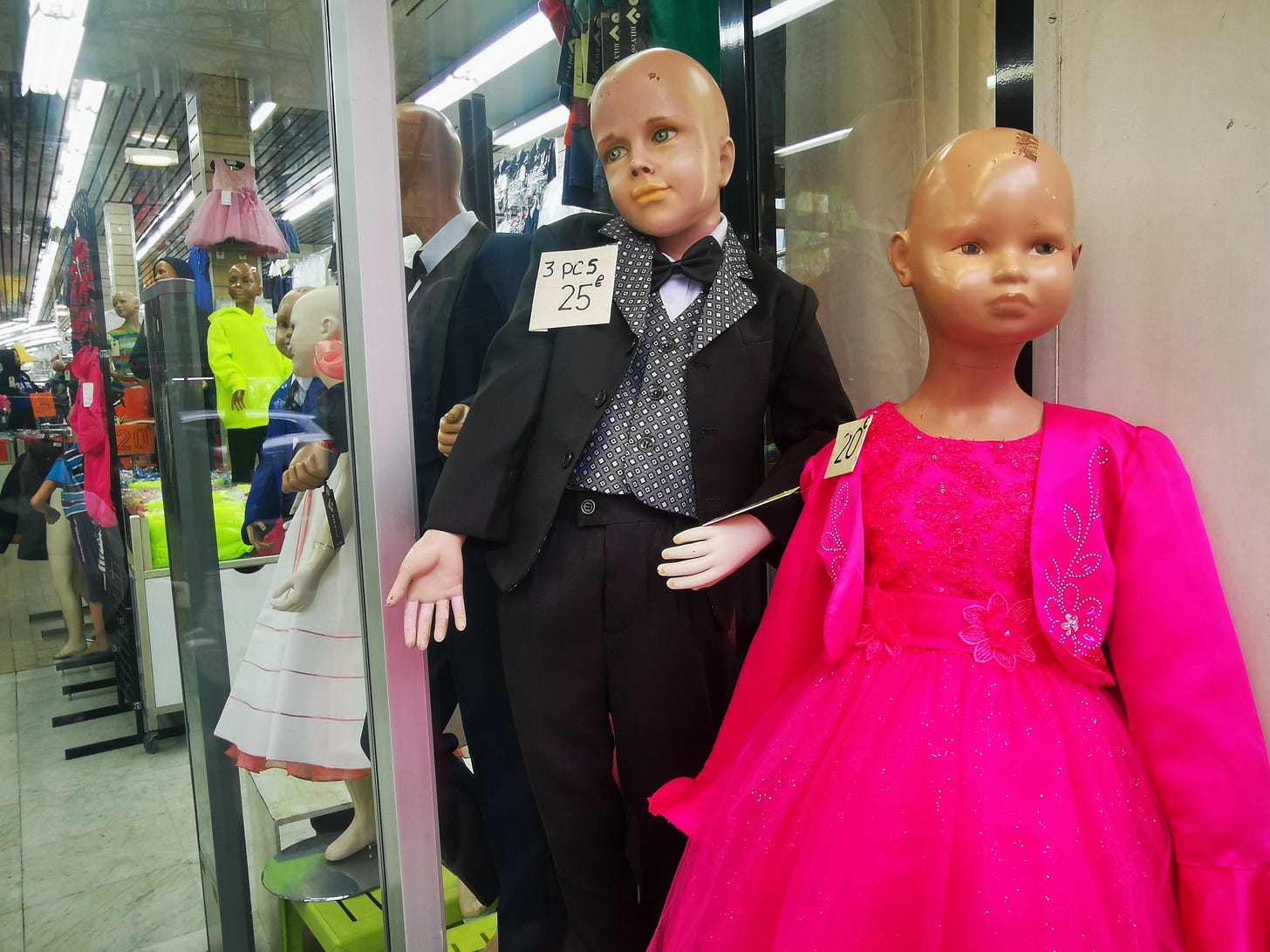
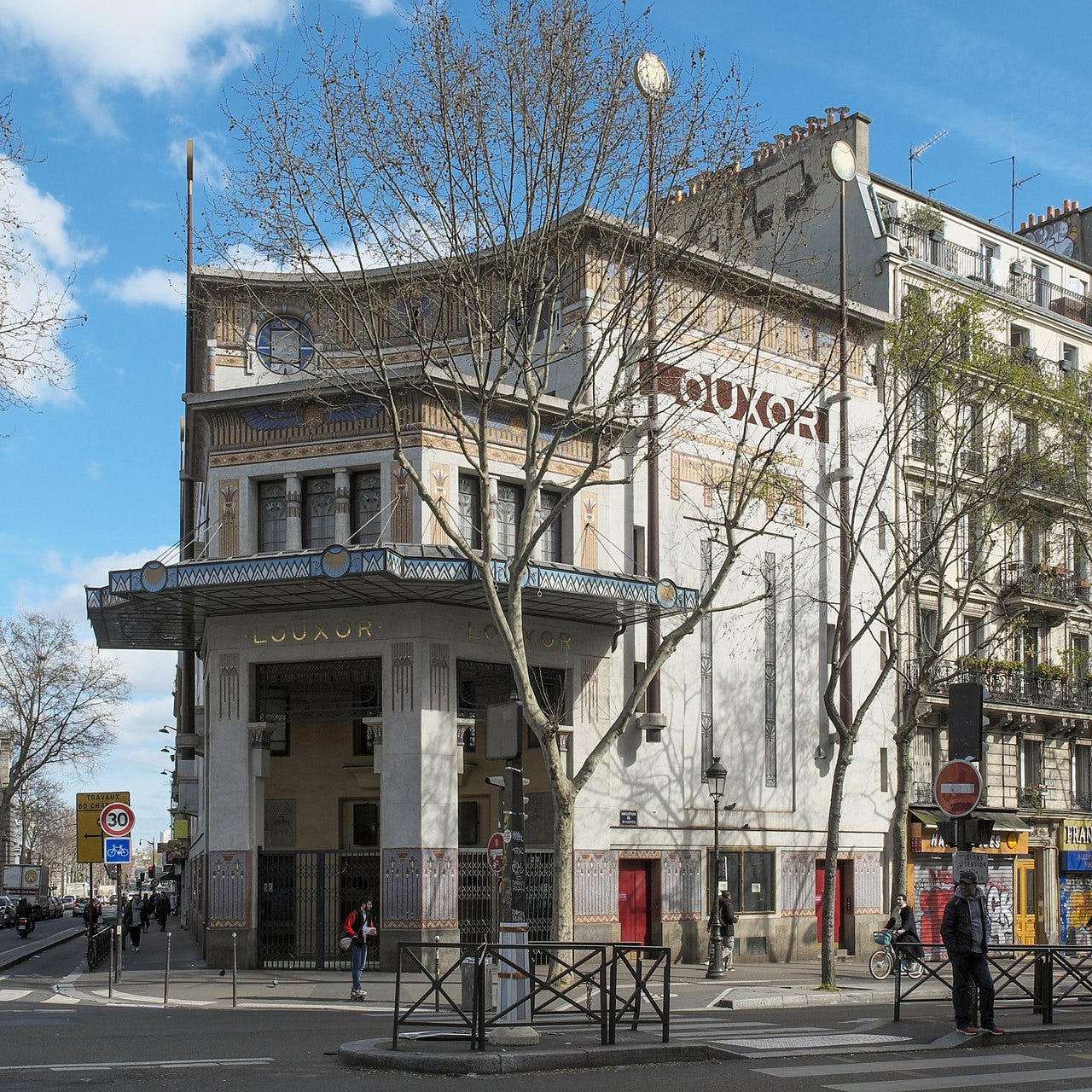
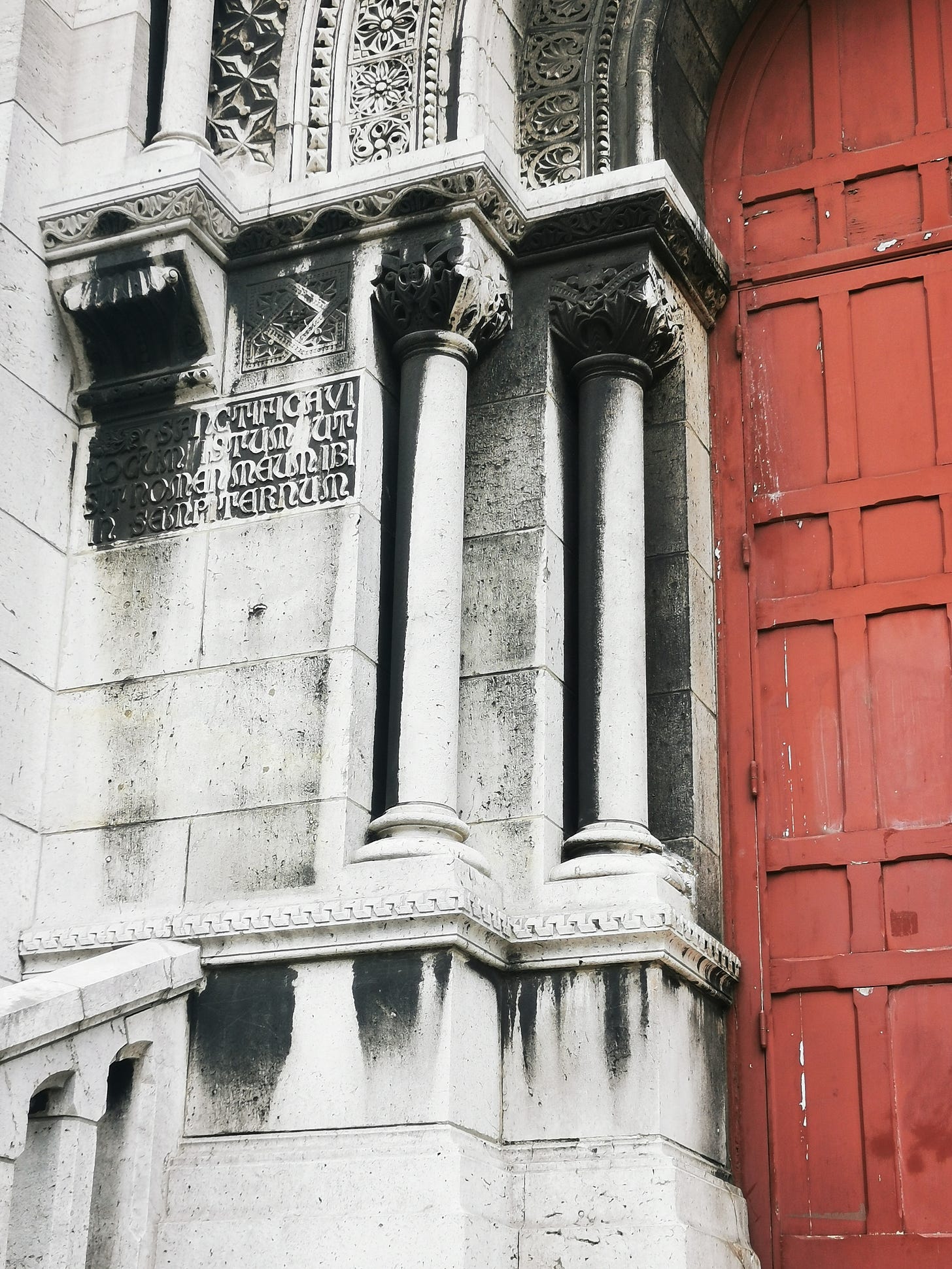
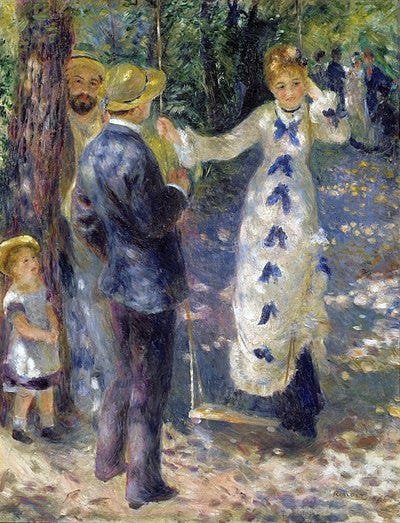

C'est amusant! This travelogue is brilliant, right down to your provocative short film. And the “marriage shop”? That’s a story in itself. Bravo, Jeanne! Je veux Paris, aussi.
"Paris par Jeanne 2023...", the smile I'm missing (I've tried to copy-paste it here!) <3